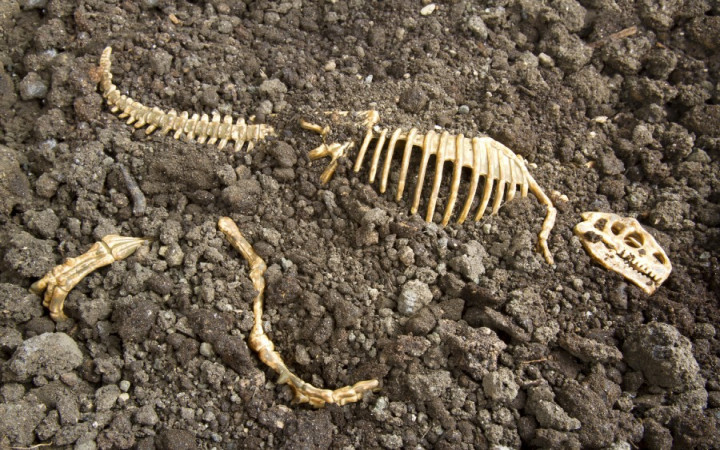Today’s Wonder of the Day was inspired by k. k Wonders, “How do people know what a Dinosaur is and when it died if it died years ago?” Thanks for WONDERing with us, k!
Do you enjoy learning about the past? Even if history isn't your favorite subject, your imagination has probably been captured by historical events at some point, whether it's the atrocities of World War I or the sinking of the Titanic.
For events that have occurred over the past century or so, historians are often able to piece together vivid accounts of what took place, using photographs and written accounts. As you look deeper and deeper into the past, though, it can be more difficult to get a clear picture of people and events.
Think about the challenge that archeologists and paleontologists face, for example. When they unearth a dinosaur on a dig in a remote region of the world, how are they supposed to piece together the history of the creature they've uncovered?
Will they find a diary or an old photo album? Not likely! Instead, these scientists use careful observation combined with advanced scientific techniques to learn more about these ancient animals. Using the fossilized bones they find, scientists will often try to determine first how old the creature is.
But how can old bones tell scientists anything? One scientific technique scientists will often turn to is carbon-14 dating. This technique has proved to be quite accurate for determining the age of ancient artifacts that have a biological origin, such as bones or wood or plant fibers, up to approximately 60,000 years old.
Carbon-14 (a carbon atom with six protons and eight neutrons) is an isotope of normal carbon, which is also known as carbon-12 (a carbon atom with six protons and six neutrons). An isotope is an atom of an element that has a different number of neutrons than the common, stable form of the element.
Carbon-14 is radioactive and is produced naturally in the atmosphere when cosmic rays collide with nitrogen atoms. When carbon-14 atoms subsequently combine with oxygen, they form carbon dioxide that gets absorbed by plants. When humans and animals eat plants, they take in carbon-14 atoms.
Carbon-14 atoms decay at a constant rate, because they are radioactive. The rate of radioactive decay of a substance is defined by its half-life, that is, the time it takes for half the atoms in a radioactive isotope to decay. Scientists have measured the half-life of carbon-14 atoms to be approximately 5,700 years. At the same time, the environment constantly produces new carbon-14, so that the percentage of carbon-14 in all living plants and animals remains fairly constant.
When an animal dies, it stops taking in new carbon. The carbon-14 it contains, though, continues to decay, while the amount of normal carbon-12 remains the same. Scientists can then compare the ratio of normal carbon (carbon-12) to radioactive carbon-14 to determine an approximate age of the creature by testing and analyzing its ancient, fossilized bones.
Since the half-life of carbon-14 is about 5,700 years, carbon-14 can only be used reliably to date objects up to around 60,000 years old. You've probably heard scientists talk about things that they claim are millions, if not billions, of years old, though. How did they get those estimates?
Carbon-14 is not the only radioactive isotope scientists can measure and use to date an artifact. Other radioactive isotopes, such as potassium-40, uranium-235, uranium-238, thorium-232, and rubidium-87, have half-lives that extend from millions to billions of years.





